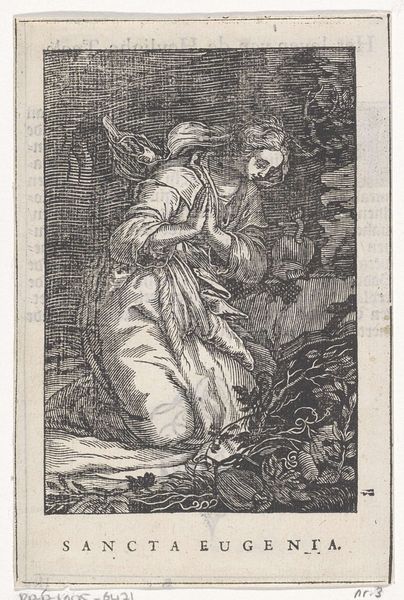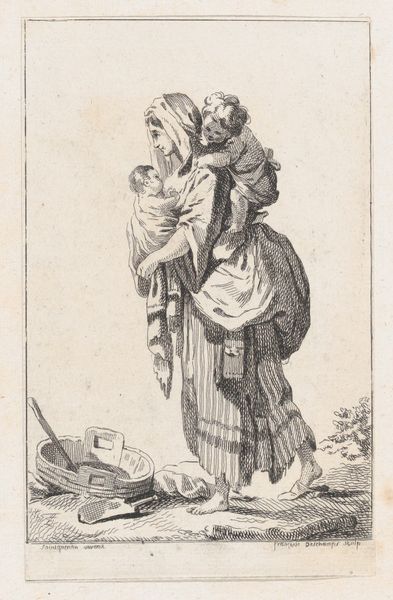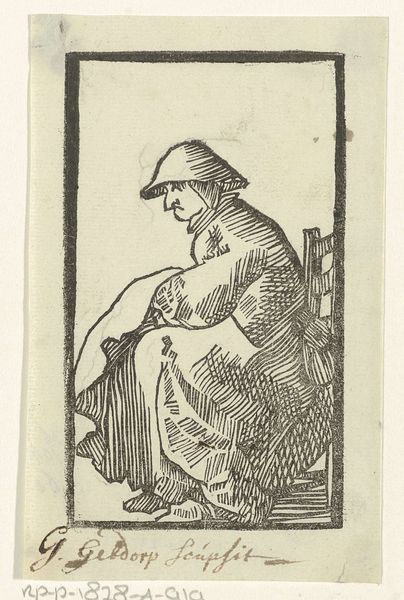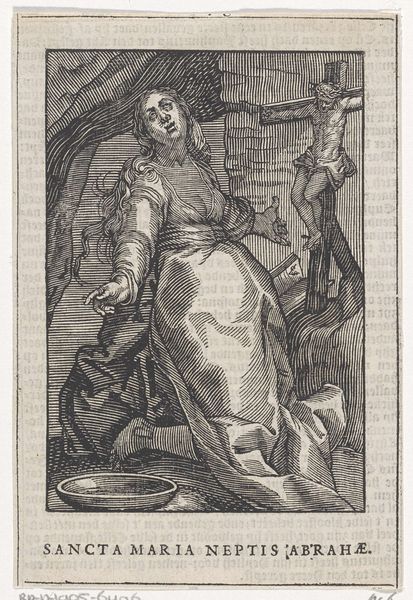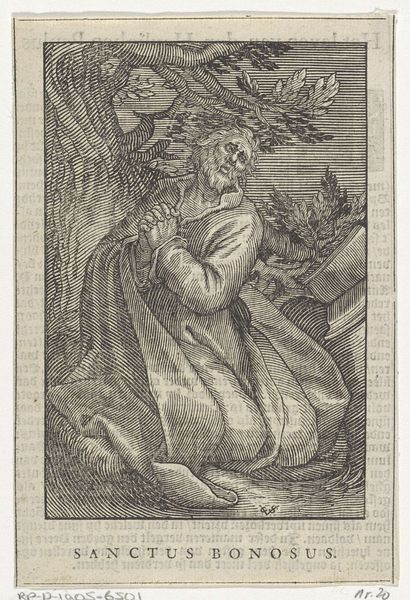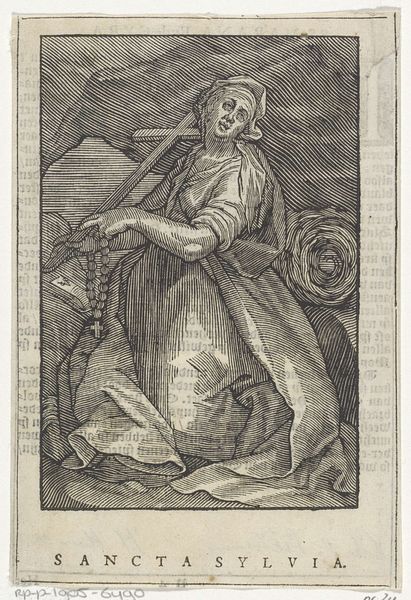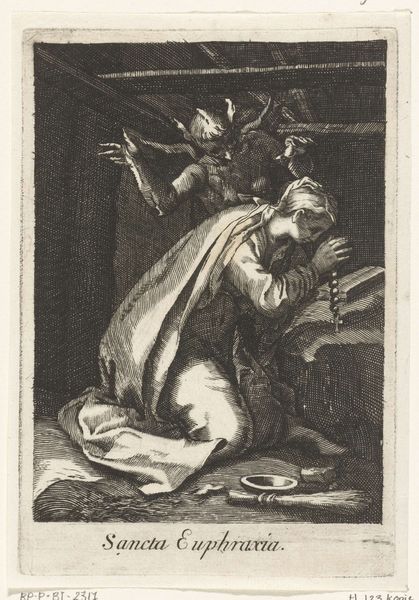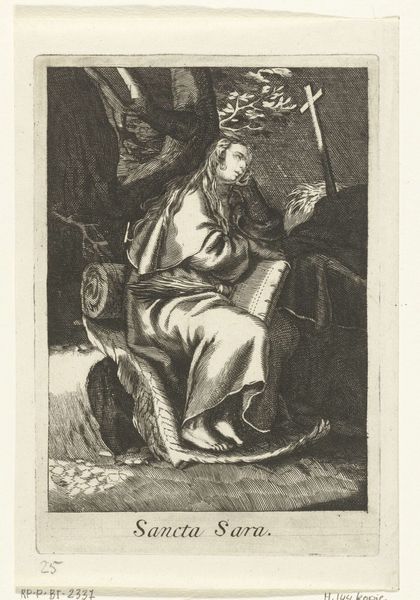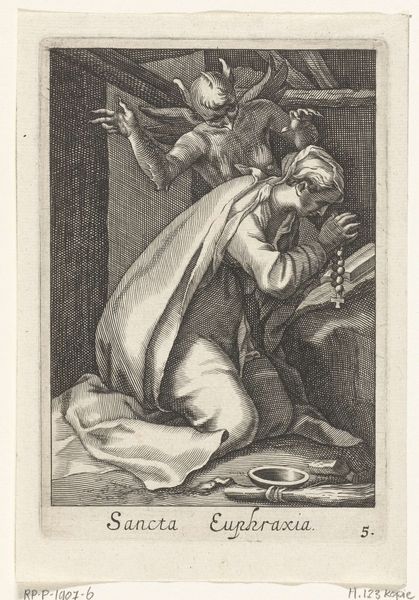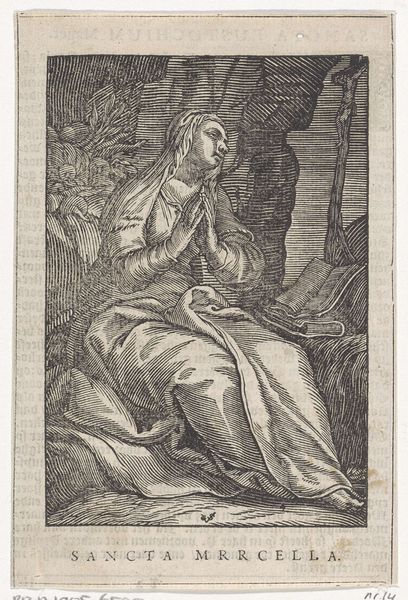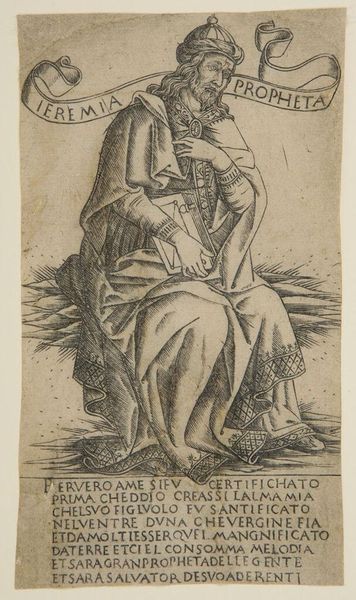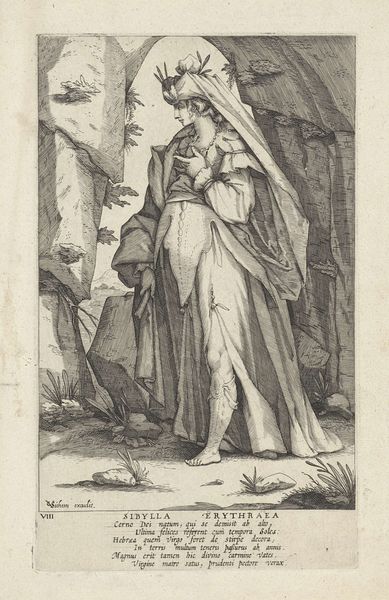
drawing, print, ink, engraving
#
portrait
#
drawing
#
medieval
#
baroque
# print
#
figuration
#
ink
#
history-painting
#
engraving
Dimensions: height 154 mm, width 106 mm
Copyright: Rijks Museum: Open Domain
Editor: So, here we have Christoffel van Sichem II’s 1644 engraving, "Heilige Melania de Oudere als kluizenares," or Saint Melania the Elder as a Hermit. It’s quite detailed for a print. How would you interpret this work, focusing perhaps on the artist's technique? Curator: The image gives prominence to the very act of production. Consider how Sichem uses the linear quality of engraving to define form, but also to mimic the textures of Melania’s garments and the rough bark of the tree. This piece sits at an interesting crossroads, blurring the line between the traditionally distinct categories of "fine art" and craft through its material and production. The very labor involved is foregrounded. Editor: That's interesting, I hadn't considered the labor so explicitly. What was the cultural context surrounding printmaking at this time? Curator: Prints democratized images, making them available to a broader audience beyond the wealthy elite who could afford paintings. Sichem, by choosing to depict Saint Melania, a figure known for her own renunciation of wealth, engages in a subtle commentary on consumption and value. Think about the irony – a medium enabling wider consumption depicts a figure defined by rejecting it. It suggests a more layered understanding of religious devotion within a shifting social landscape. The ink, the paper, the act of reproduction…they all contribute to meaning. Editor: That gives me a lot to consider. I’m seeing it less as a simple devotional image and more as a commentary on access and social values. Curator: Exactly! It invites us to question the relationship between materials, production, and the dissemination of ideas in the 17th century. I never looked at it that way before!
Comments
No comments
Be the first to comment and join the conversation on the ultimate creative platform.
